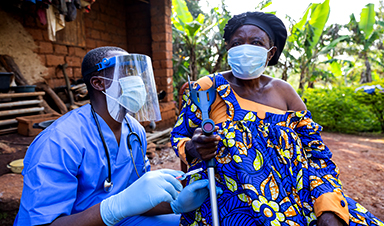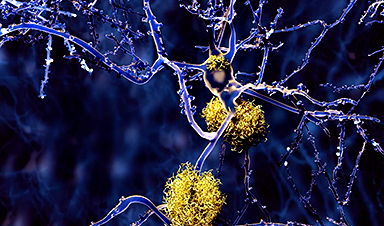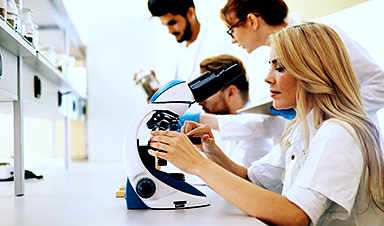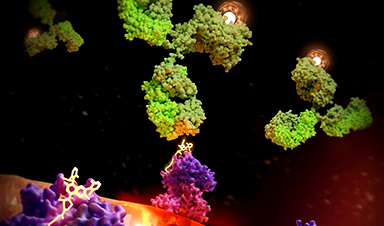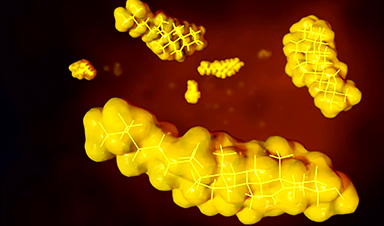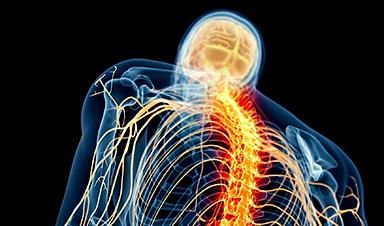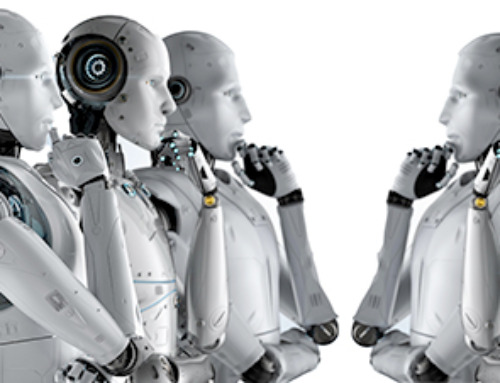Autopsy results from 44 people who died with COVID-19 show how the virus spreads through not just the respiratory system, but the entire body, including the brain, persisting for months in some patients.
A description of the results, published in the peer-reviewed journal Nature in December, highlights how far-reaching the burden of infection can be, with viral fragments found in 79 of 85 locations in the body across the 44 patients.
The small study forms “the most comprehensive analysis to date of the cellular tropism, quantification and persistence of SARS-CoV-2 across the human body, including the brain,” according to its authors.
The virus was able to spread to multiple organs and systems even in patients who died within a week of feeling their first symptoms, researchers found.
The 44 people whose autopsies contributed to this research were all unvaccinated individuals who had died with COVID-19. The median age of the individuals was 62.5 years, and 61.4 per cent had three or more comorbidities. The median span of time between the onset of symptoms and the patient being hospitalized was six days, with 18.5 days being the median interval between symptom onset and death.
Across the board, the autopsies showed that the virus was able to penetrate into numerous systems of the body, although researchers noted there was a significantly higher burden of SARS-CoV-2 RNA found in respiratory tissues. Researchers found the virus had invaded more than 35 cell types and membranes across different systems in the body.
Out of the 44 autopsies, 11 were whole-body and brain autopsies, providing the fullest picture of the viral spread in those individuals.
Of these 11, the two with the shortest duration between symptom onset and death—four days and five days—had the highest amount of viral RNA levels in their respiratory system, with high levels also found across the cardiovascular system and optic tissue, among others.
SARS-CoV-2 was found in at least one place in the central nervous system or brain tissue in 10 out of 11 of these autopsies, including five out of six of those who died more than a month after the first onset of symptoms.
Researchers noted that although there were significant viral traces found, the actual structural tissue of the brain was largely unchanged by the virus.
The individual who had the longest duration between symptom onset and death—230 days—had been hospitalized numerous times and ultimately died of lung transplant complications, not COVID-19, but was found to be positive for COVID-19 and have viral traces in numerous parts of their body, including the respiratory system, the heart, the tissue in the eyes and the brain.
The cause of death ranged across the individuals. Thirty-eight died of COVID-19, while six died of another core issue while having COVID-19. Of those who were killed by the virus, 35 had either acute pneumonia or severe lung damage at their time of death.
Two of the patients included had only mild symptoms of COVID-19 and had died of other causes, but still were found to have SARS-CoV-2 RNA spread widely throughout their bodies, suggesting that although the bulk of the autopsies focused on severe and fatal cases, the virus can penetrate far into the body even in mild cases.
The study is limited by its small scope and its focus on unvaccinated, older individuals who died with COVID-19, meaning these results may not reflect what occurs when younger, vaccinated individuals contract the virus.
Previous autopsy research has found evidence of COVID-19 across multiple systems, but some have theorized that viral traces found outside the respiratory system could’ve been due to residual blood left in tissues or cross-contamination. Researchers say that is not the case in this new study, which confirmed SARS-CoV-2 at the cellular level.
How long the virus persisted within the tissue was another aspect researchers were interested in. They found that among those who had a longer interval between symptom onset and death, the difference between the level of virus in the respiratory and non-respiratory tissues diminished significantly. This may be because different tissues are better at fighting the virus and identifying it, researchers theorized.
“Understanding mechanisms by which SARS-CoV-2 evades immune detection is essential to guide future therapeutic approaches to facilitate viral clearance,” the authors stated.
News
New human antibody shows promise for Ebola virus treatment
New research led by scientists at La Jolla Institute for Immunology (LJI) reveals the workings of a human antibody called mAb 3A6, which may prove to be an important component for Ebola virus therapeutics. [...]
Early Alzheimer’s Detection Test – Years Before Symptoms Appear
A new biomarker test can detect early-stage tau protein clumping up to a decade before it appears on brain scans, improving early Alzheimer’s diagnosis. Unlike amyloid-beta, tau neurofibrillary tangles are directly linked to cognitive decline. Years [...]
New mpox variant can spread rapidly across borders
International researchers, including from DTU National Food Institute, warn that the ongoing mpox outbreak in the Democratic Republic of the Congo (DRC) has the potential to spread across borders more rapidly. The mpox virus [...]
How far would you trust AI to make important decisions?
From tailored Netflix recommendations to personalized Facebook feeds, artificial intelligence (AI) adeptly serves content that matches our preferences and past behaviors. But while a restaurant tip or two is handy, how comfortable would you [...]
Can AI Really Think? Research Reveals Gaps in Logical Execution
While AI models can break down problems into structured steps, new research reveals they still fail at basic arithmetic and fact-checking—raising questions about their true reasoning abilities. Large Language Models (LLMs) have become indispensable [...]
Scientists Just Made Cancer Radiation Therapy Smarter, Safer, and More Precise
Scientists at UC San Francisco have developed a revolutionary cancer treatment that precisely targets tumors with radiation while sparing healthy tissues. By using a KRAS-targeting drug to mark cancer cells and attaching a radioactive [...]
Superbugs Are Losing to Science, Light, and a Little Spice
Texas A&M researchers have found that curcumin, when activated by light, can weaken antibiotic-resistant bacteria, restoring the effectiveness of conventional antibiotics. Curcumin: A Surprising Ally Against Superbugs In 2017, a woman admitted to a [...]
New Research Shatters the Perfect Pitch Myth
For decades, people believed absolute pitch was an exclusive ability granted only to those with the right genetics or early music training. But new research from the University of Surrey proves otherwise. It’s been [...]
Why Some Drinkers Suffer Devastating Liver Damage While Others Don’t
A study from Keck Medicine of USC found that heavy drinkers with diabetes, high blood pressure, or a large waistline are up to 2.4 times more likely to develop advanced liver disease. These conditions may amplify [...]
“Good” Cholesterol Could Be Bad for Your Eyes – New Study Raises Concerns
‘Good’ cholesterol may be linked to an increased risk of glaucoma in individuals over 55, while, paradoxically, ‘bad’ cholesterol may be associated with a lower risk. These findings challenge conventional beliefs about factors that [...]
Reawakening Dormant Nerve Cells: Groundbreaking Neurotechnology Restores Motor Function
A new electrical stimulation therapy for spinal muscle atrophy (SMA) has shown promise in reactivating motor neurons and improving movement. In a pilot clinical trial, three patients who received spinal cord stimulation for one [...]
AI’s Energy Crisis Solved? A Revolutionary Magnetic Chip Could Change Everything
AI is evolving at an incredible pace, but its growing energy demands pose a major challenge. Enter spintronic devices—new technology that mimics the brain’s efficiency by integrating memory and processing. Scientists in Japan have [...]
Nanotechnology for oil spill response and cleanup in coastal regions
(Nanowerk News) Cleaning up after a major oil spill is a long, expensive process, and the damage to a coastal region’s ecosystem can be significant. This is especially true for the world’s Arctic region, [...]
The Role of Nanotechnology in Space Exploration
Nanotechnology, which involves working with materials at the atomic or molecular level, is becoming increasingly important in space exploration. By improving strength, thermal stability, electrical conductivity, and radiation resistance, nanotechnology is helping create lighter, more [...]
New Study Challenges Beliefs About CBD in Pregnancy, Reveals Unexpected Risks
CBD is gaining popularity as a remedy for pregnancy symptoms like nausea and anxiety, but new research suggests it may not be as safe as many believe. A study from McMaster University found that [...]
Does COVID increase the risk of Alzheimer’s disease?
Scientists discover that even mild COVID-19 can alter brain proteins linked to Alzheimer’s disease, potentially increasing dementia risk—raising urgent public health concerns. A recent study published in the journal Nature Medicine investigated whether both mild and [...]

